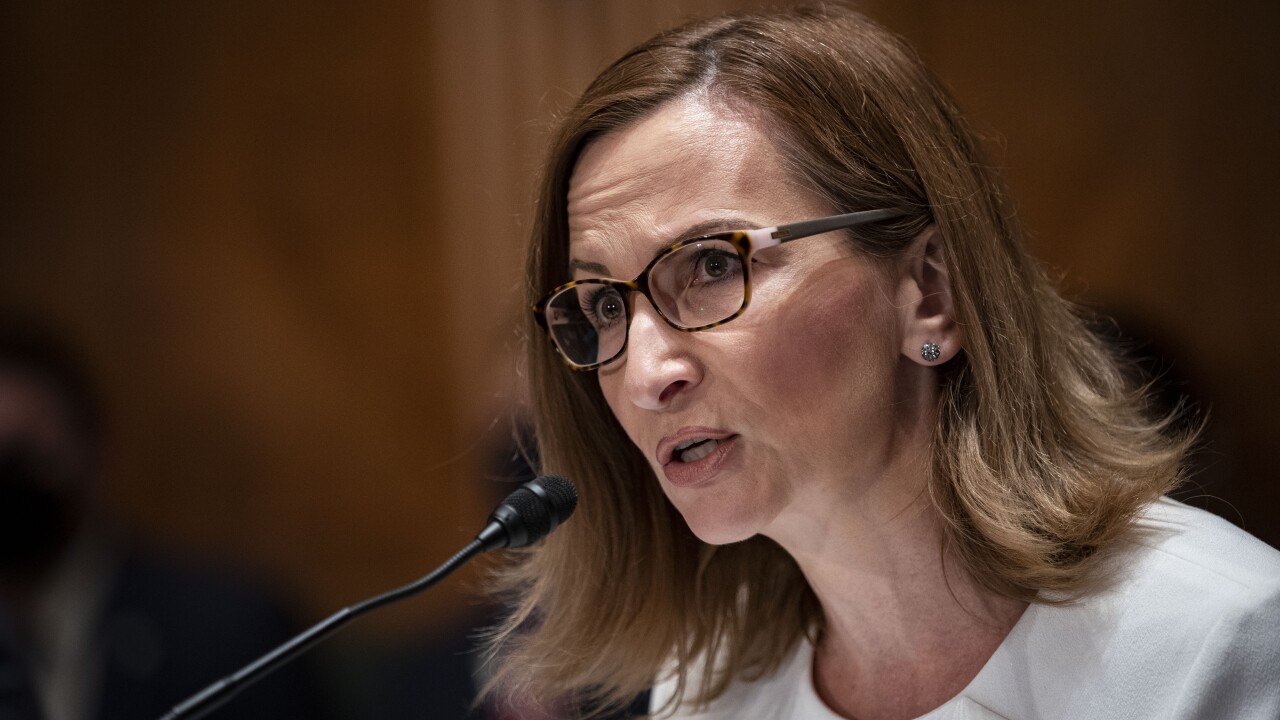Want unlimited access to top ideas and insights?
The U.S. EMV experience is now a little over one year old. Most of the big banks have reissued EMV chip cards, although most merchants have still not completed their migration to EMV at the point-of-sale.
Counterfeit fraud has decreased, but lost & stolen fraud and on-line fraud have increased. Nearly everyone agrees the shopping experience has worsened with the introduction of EMV at the POS with uneven and unpredictable experiences and longer check-outs. Given the mixed results, many of us speculate on what could have been done better and question why the experience yielded such diverse outcomes for various constituents of the payments space.
The U.S. EMV experience has been distinguished from the start by two very unusual differences from markets outside this country. First, while everyone acknowledged the U.S. is the largest and most complex card market in the world, we were given the shortest period of time to convert to EMV. I therefore doubt many objective observers would argue with the characterization that the U.S. implementation was “rushed." Second, unlike most other markets, we dropped the requirement to migrate to PIN.

These two important distinctions are core to understanding the U.S. EMV migration and why it has yielded both big winners and big losers.
For many years, the U.S. market drug its feet on EMV. Issuers were awash in the highest interchange fee income in the world and paid little attention to the expense side of the business. Fraud generally kept its distance since the U.S. was blessed with the most advanced telecommunications infrastructure in the world, an infrastructure that guaranteed that most card payments would be authorized on-line. Also, the as the world moved to EMV and began to require PINs, the U.S. telecommunications advantage disappeared rendering the U.S. vulnerable to fraud and an easier target than other markets.
There were a number of parties in the U.S. that benefitted from the rushed nature of the implementation. Some of those parties had waited for years for the U.S. to undertake efforts to move to the EMV global standard, but they were growing increasingly concerned that the U.S. market might leap from traditional magstripe cards to contactless payments without stopping to move to contact EMV cards first.
At least one card brand had suffered significant loss of debit market share resulting from the Durbin Amendment’s merchant routing provisions and likely viewed a migration to EMV as a means to recapture some of its lost debit market share. The rushed implementation created huge demands for scarce resources and services from merchants anxious to avoid liability shift resulting in a lack of price elasticity and lack of competition. Although it’s difficult to identify all of the Gold Rushers, some are fairly easy to spot.
Major global payment brands and members of EMVco- As I already mentioned, at least one of the brands benefitted enormously by at least temporarily recouping some of the debit volume lost to the PIN debit networks as a result of merchants exercising their Durbin routing rights to route transactions to competitors offering more secure and less expensive alternatives.
Initial POS implementations had confusing and limiting POS prompts that resulted in consumers usually selecting the global payment brand option instead of the non-descript “U.S. Common” debit option. Global brands benefitted from levying fines and processing chargebacks associated with their liability shift mandates.
The same global brands who are EMVco members will continue to mine the gold from the transition from magstripe technology, a technology borne and maintained in an open-standard environment, to the proprietary technology owned and maintained by the oligarchy of payment brands who own EMVco. This transition completely disrupts the competitive landscape for payment card services and conveys huge strategic advantages to the owners of EMVco for the foreseeable future.
POS systems providers- Point of sale hardware and software providers to merchants were able to mine the gold from overwhelming demand for their products and services caused by liability shift. Many players in this space had looked forward to the U.S. migration to EMV for years and finally reaped the economic benefits associated with their costly investment in EMV technology.
EMV consultants- Consultancies which were borne outside the US, migrated to the U.S. to take advantage of the US migration. Their services were met with overwhelming demand from a U.S. market with an appetite for their services that far exceeded that of markets outside the U.S.
Testing and certification tool providers- Like the consultants, this group was unprepared for the demands presented by the U.S. migration and they likely have benefitted significantly as a result.
Big Bank Issuers- The big banks were standing first in line for the new EMV cards and many reissued early on. This enabled them to shift their fraud expenses onto unsuspecting merchants as well as to merchants who despite their efforts were unable to convert to EMV prior to the 10/1/15 deadline.
Crooks- Fraudsters obviously prefer signatures over PINs and the US’s half-way EMV implementation meant they could continue to wreak havoc with US card payments for the foreseeable future.
While many parties gained from the U.S.’s hurried EMV implementation, the merchant community has suffered greatly. Despite the global brands’ continued assurances that they view merchants as their “customers," merchants continue to be taken for granted, particularly in the U.S. U.S. merchants pay the highest fees for card acceptance in the world.
Over the years, interchange has doubled, fees to pay for the networks themselves have been gradually shifted from the issuers to the merchants, new merchant fees emerge on a regular basis and merchants have been saddled with the costs of protecting the brands and the issuers from their own fraud-prone card products through the creation of PCI. Nevertheless, the current EMV migration may be the worst example of merchant abuse by the global brands in the history of card payments in the U.S.
Merchants- Given the rushed nature of the U.S. EMV migration and the lack of government oversight (an element present in many of the previous EMV implementations), it should have come as no surprise to anyone that merchants would see few benefits but pay most of the costs associated with the US implementation.
The global brands’ suggestion that “the party doing the least to control fraud should bear the cost of fraud” sounds reasonable but masks a completely one-sided plan that predictably shifted the cost of fraud from issuers to merchants. It also challenges one of core trade-offs between issuers and merchants central to the payment card business.
The notion that merchants are guaranteed payment when they receive an authorization from an issuer had already been eroded by the growing use of chargebacks by card issuers to recover their costs of fraud. Liability shift turned the notion completely on its head, leaving merchants to question what they are getting for the overly inflated fees they were already paying for card acceptance.
PIN Debit Networks- These competitors to the global card brands saw their debit transaction volume slow to a trickle or disappear at many of the merchants that first implemented EMV. The rush afforded little time for proper planning and implementation of POS screen prompts which might have replicated the pre-EMV POS environment.
At least, one global brand’s insistence on customer prompts for debit left many merchants confused about their legal rights and some likely acquiesced to the brand’s point of view. This led to further erosion of the PIN Debit networks market share.
Small Bank Issuers- Unfortunately for small banks, they had to stand in line behind the big banks when waiting for new EMV cards. This meant they were unable to take advantage of liability shift to pay for their new cards.
US Consumers- The US EMV implementation was characterized by the global brands as “chip and choice”, another pleasant-sounding phrase that masked the fact that US issuers would gain a reprieve from the standard requirement to issue PINs when they reissued their magstripe cards as EMV cards. As usual, all the choices were left up to the issuers, not to merchants nor to consumers, many of whom may have preferred much more secure PINs.
As previously mentioned, at least one of the global brands benefitted from the predictable choice of issuers to forgo PINs in favor of worthless signatures. U.S. consumers are big losers as the U.S. EMV implementation failed to measure up to the worldwide standard of chip & PIN. Fraud is still much higher than necessary and is growing at an alarming rate on the Internet. Although consumers are protected from most losses by Regulations E and Z, they still endure the ongoing hassle of regular card replacement and managing their payments with recurring billers, something that could have been substantially reduced had the brands required PINs.
Consumers have also had to endure the effects of longer check-out lines and unpredictable shopping experiences at merchants that have migrated to EMV. Some have encountered bizarre prompts at the checkout asking them to choose between Visa or Mastercard debit and “U.S. Common."
The Bum’s Rush practically ensured that the U.S. implementation of EMV would be a disaster for merchants and for consumers. Although it’s fashionable in this country to proclaim the government should stay out of the affairs of private business, evidence exists that in most markets in which public regulators oversaw EMV implementations, the results were much better for merchants and consumers.





